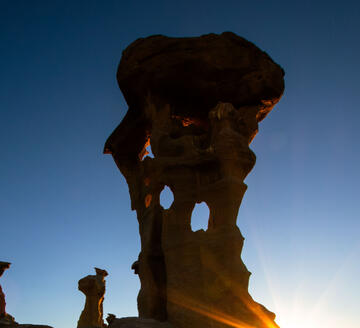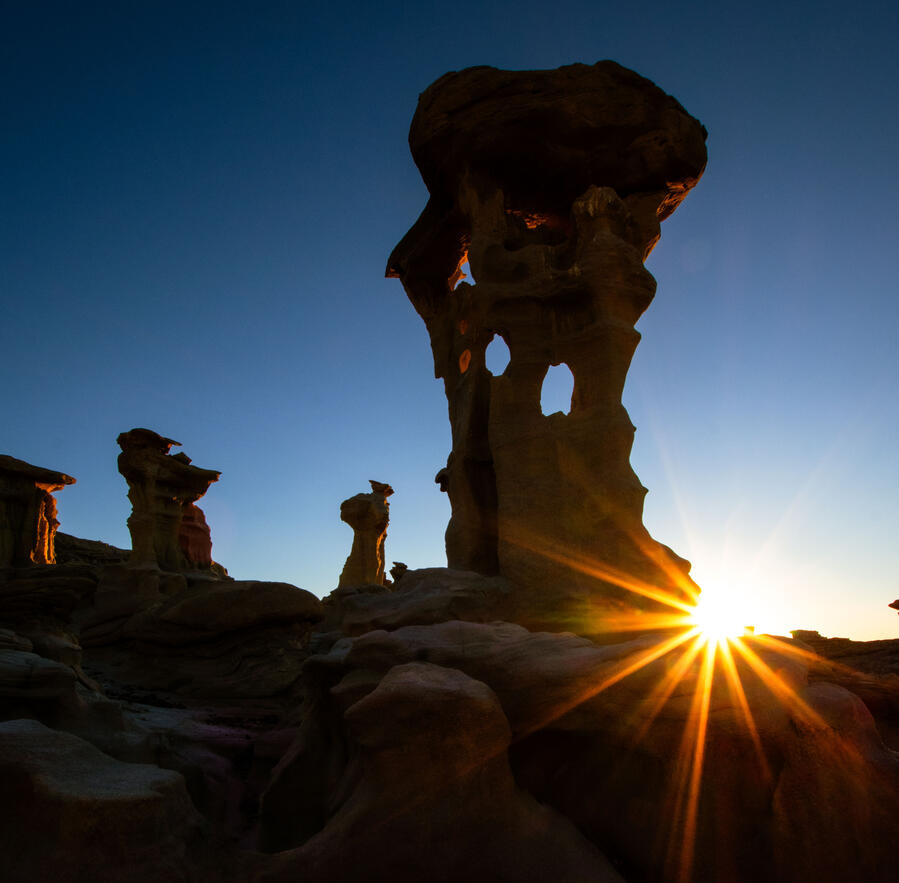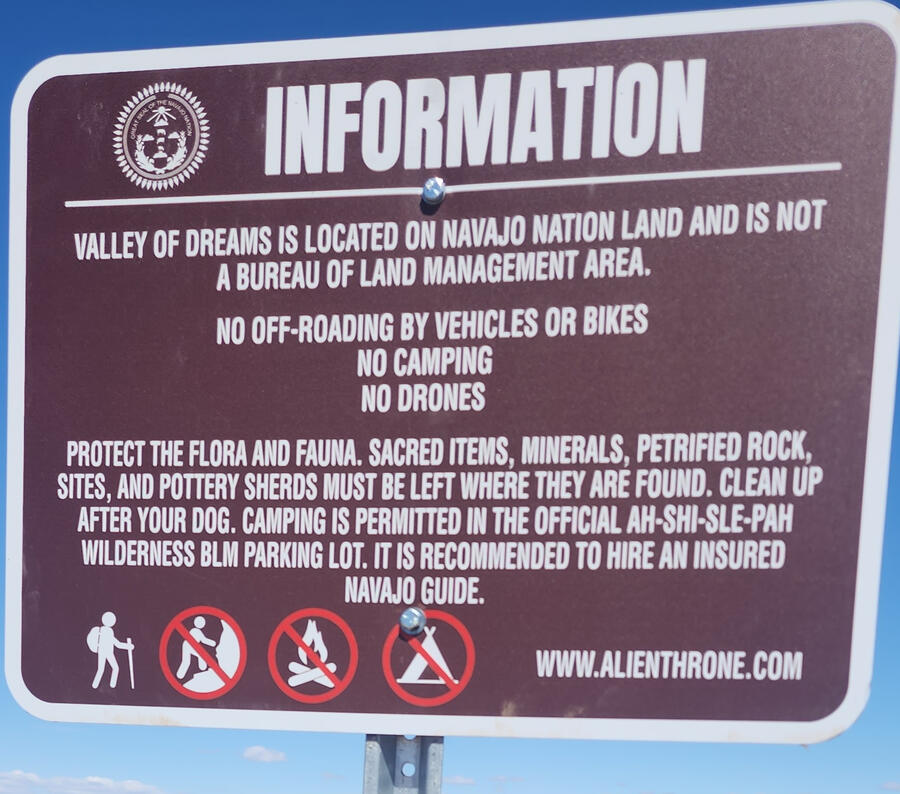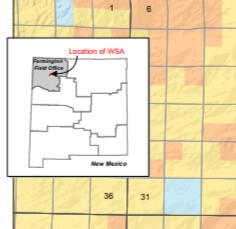
Valley of Dreams
Ah-Shi-Sle-Pah Navajo Lands (non-BLM managed area)
geology

The rock formations in the Valley of Dreams, including dramatic features like the "Alien Throne," are primarily the result of erosion. Formations are sculpted from layers of sedimentary rock that have been deposited over millions of years.Deposition of Sediments: This area was once a riverine delta with swamps, floodplains, and various bodies of water during the late Cretaceous period, approximately 70 million years ago. Over time, these waters deposited a thick layer of sediments, including sandstone, shale, mudstone, coal, and silt.
Formation of Sedimentary Rock: Over millions of years, the layers of sediment underwent lithification, transforming into sedimentary rock through processes like compaction and cementation.
Uplift and Exposure: Geological uplift, possibly linked to the creation of the Rocky Mountains, brought these sediment layers above sea level. Once exposed, the rocks were subjected to natural weathering and erosion.
Erosion by Water and Wind: The primary sculpting forces in the Bisti/De-Na-Zin Wilderness are water and wind erosion. Rainwater, especially from intense storms, erodes softer rock layers more quickly than harder layers, creating the varied and intricate landscape seen today. Wind also plays a significant role by blowing away loose particles and further sculpting the rock.
Differential Erosion: The distinctive formations, such as spires, hoodoos, and the "Alien Throne," are often the result of differential erosion, where harder rock caps more erosion-resistant structures, protecting the underlying softer materials from being eroded as quickly. This results in the vertical and often bizarrely shaped pillars and thrones seen in the area.
Ethical Hiking

Navajo Nation lands are held in trust by the United States government for the Navajo Nation and its people. Sovereignty and land rights are distinct from BLM lands, which are public lands managed for multiple uses including recreation, conservation, and resource extraction. The Valley of Dreams and its trails being on Navajo Nation lands means they are under the jurisdiction and governance of the Navajo Nation, not subject to the same regulations and management practices that govern BLM lands.Áshįįh Łibáhí is the Navajo word for the valley of this Wilderness area. It means colored salt crystals, which is describing the quartz, calcite, barite, and pyrite crystals.Cultural Significance: Many sites within Navajo Nation lands, including natural formations like the Alien Throne, hold significant cultural, historical, and spiritual importance for the Navajo people. The management and access to these areas are guided by principles that respect these values, which can differ greatly from those on BLM lands, where the focus might lean more towards recreational and commercial use.Environmental Stewardship: The Navajo Nation has its own programs and strategies for managing its natural resources, which include preserving local wildlife, sensitive soils, and delicate rock formations. This stewardship often emphasizes the preservation of the ecosystem in its natural state, which might impose stricter access and usage rules compared to BLM policies. Travelers must be aware of and comply with these regulations to minimize their impact.Legal and Ethical Travel Considerations: Travelers venturing into areas like the Alien Throne must adhere to Navajo Nation laws and regulations. This includes obtaining necessary permits or permissions for UAV flying. Ethically, visitors should approach travel with respect for Navajo land avoiding disturbance to wildlife, not removing plants or rocks, and leaving no trace of their visit to protect the integrity of the ecosystem.
By understanding these distinctions and showing respect for Navajo Nation lands, visitors can contribute positively to the conservation efforts and respect the cultural significance of the area while enjoying its natural beauty.
Resources

Camping is not allowed anywhere around the Valley of Dreams area, trailheads, or parking lots. One can camp at the BLM managed Ah-Shi-Sle-Pah Wilderness parking lot or at the Bisti/De-Na-Zin Wilderness parking lots. There are also paid campgrounds at the Bisti Campground or Horsethief Campground off US-550.


